Are you a Quiet Speculation member?
If not, now is a perfect time to join up! Our powerful tools, breaking-news analysis, and exclusive Discord channel will make sure you stay up to date and ahead of the curve.
And so it begins. I want to start with a general thank-you to everyone who helped out. This was an enormous undertaking logistically and took much longer than expected. Even considering the deck I was using for testing purposes. Thank you for putting up with this insanely ambitious project. And please, please, pleeeease be willing to help again next time!!!
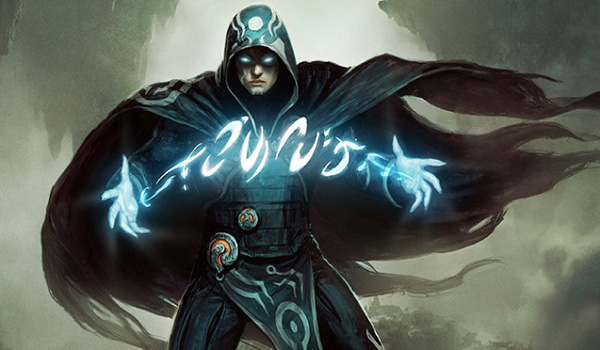
Those who remember my last venture into testing a banned card remember that I inherited and then expanded on Sheridan's project. This time I was completely untethered and was able to choose what and how to test the card. Anyone who has ever had complete creative freedom may sympathize, but this actually made things significantly harder for me. It took a not insignificant amount of time to find the right people and the right decks for this project and then actually do the testing. I don't know if you've noticed, but Magic is a very time-intensive game. Even matches that are massive blowouts take 10 minutes to complete, especially in paper. Thus, my answer to "Why didn't you do X?" is simply no time. There is a six month gap between articles in this series for a reason.
Experimental Procedure
The general setup for these tests was described here. I stuck to them for the duration. The only changes that I made were to the tools we used. There was no work done on MTGO this time. I used MTGO for some games last time because the cards that I didn't have my test partners lent to me. That was not the case this time and I wasn't about to shell out for digital Scalding Tarns. I've also gotten increasingly frustrated with MTGO for unrelated reasons and was avoiding it out of principle. As a result, those matches that were not conducted in person were done though a combination of free simulators and video conferences over Skype. This also meant that I didn't have to throw out misclick matches.
Choosing the Test Deck
I mentioned this in a few articles over the winter, but I had a very hard time actually choosing my test deck. My procedure called for using the deck that got the card banned, or an unfair deck. The problem with Jace, the Mind Sculptor (henceforth JtMS to save keystrokes) is that he was banned because of Cawblade in Standard. It really isn't possible to recreate the deck because Stoneforge Mystic, Preordain, and Ponder are also banned. I tried some UW shells and Jace was uninspiring. He wasn't bad per se but the decks really didn't make full use of his 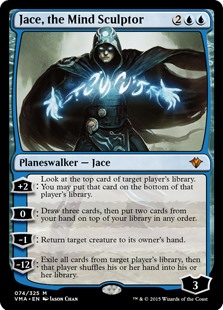 power. I also looked at unfair decks but the only one that had the space for him was RUG Scapeshift, and that deck just wasn't good. I started this project in mid-October and Modern was just too fast for the deck. It was great when it could prey on Twin but time has left it behind.
power. I also looked at unfair decks but the only one that had the space for him was RUG Scapeshift, and that deck just wasn't good. I started this project in mid-October and Modern was just too fast for the deck. It was great when it could prey on Twin but time has left it behind.
I ended up looking at Legacy for help. JtMS is legal there and sees plenty of play, so I reasoned that they know what decks really want him. I didn't look to Vintage because Vintage. While some Delver and Sneak and Show lists did have Jace, it was overwhelmingly BUG Shardless and Miracles. This meant grindy midrange-control decks. Thus I was basically forced to take the most boring option available and use Jesaki Control. Remember, this was October 2016 and Corey Burkhart had yet to prove that Grixis Control was a thing. So to choose the—no avoiding this, is there?—control deck, I selected a number of successful lists from September through October and aggregated them to create the following "consensus" Jeskai Control deck.
Jeskai Nahiri, Experiment Control Deck
I was a little skeptical of the Cryptics over Ancestral Vision but more lists had Cryptic than Vision so that was the pick. Most of the lists were very similar otherwise, usually just a few numbers shifted. The sideboard showed far more variation and nothing seemed to be really established as right. I picked the cards that were most common and adjusted numbers until it all fit.
The Jace Deck
Choosing Jeskai as the control (ugh) deck was secretly a benefit because it made fitting JtMS in easy. I just cut Nahiri and Emrakul and added Jace. The other options required massive adjustments to fit in a four-mana planeswalker as a four-of, and personally I thought it was ruining them, but that was no issue here. Additionally, I got to make a hilarious pun out of the name.
Jacekai Control, Experimental Test Deck
I am a comedic genius. I also made a number of changes based on having Jace rather than Nahiri and considering the metagame of what was by then late October. Nahiri is more of a slow grind of incremental advantage while Jace is an actual card advantage engine. Thus I wanted cheaper spells so I had more to do every turn, and cut my total number of counterspells.
The sideboard has the most dramatic changes. Despite a lackluster Dredge matchup, Nahiri couldn't play Rest in Peace because sometimes you had to discard Emrakul and then your win condition was useless. I fixed that here. I also really didn't like Crumble to Dust. It is a little slow for Tron and lackluster against Jund, while Spreading Seas is very good against both—so the latter became a four-of. I also put in more sweepers with an additional Verdict main and Anger board.
This meant I had to make cuts to the maindeck, but I didn't like Remand in the metagame or Timely Reinforcements maindeck. I cut them and added in Blessed Alliance, which had impressed me elsewhere against Infect and Burn. With my decks selected, it was time to put together the gauntlet.
The Gauntlet
Four decks from Tier 1 and one from Tier 2 were selected to test the decks. Each one is an aggregated list from successful lists of the time, that being October 2016. If you're wondering why I didn't account for the bannings or Fatal Push, that's why. It all happened before those were things and I was not going to redo two months of work to accommodate the unexpected. Furthermore, I suspect you don't actually want me to do that because the format is much slower now and a card like Jace much more potent without quick kills from Infect to worry about.
Many criticized the fact that I didn't test Stoneforge against Jund, forgetting that I couldn't get a worthy pilot to actually agree to join this mad quest. Begging and pleading failed this time as well, but I did irritate one into agreeing. Gadfly technique works, kids. I wish it hadn't—Jeskai vs. Jund is a miserably long and grindy affair. But here's the deck I used.
Jund (Test Deck)
Next we needed the fast decks. Infect was the obvious choice. I actually just reused my list from the Stoneforge test, mostly because this was October and players were still cold on Blossoming Defense. I don't think it affected anything: the number of times that it would have won things for Infect were roughly offset by the more general utility of Spell Pierce.
Infect (Test Deck)
There really weren't any "normal" agro decks in Tier 1 at the time except Burn, but exploratory testing showed that to be a very good matchup for Jeskai. While the maindeck Timely was a factor, it was far less of one than counterspells and Lightning Helix. Couple that with the test deck packing two Blessed Alliances and Burn was out. I wanted matchups that were close rather than known to be good or bad because the data is more interesting. A neutral matchup becoming good is interesting, a good matchup becoming better isn't. If a bad matchup goes good that is interesting, but going from 30% win rate to 35% is not. I wanted big results. This really just left Affinity.
Affinity (Test Deck)
It was harder than expected to finalize the Affinity list. Most of the deck is set in stone, but the three-drops and the colored spells are open to interpretation. There wasn't a clear winner in my amalgamated sample, so I split the difference on the threes and chose the most aggressive colored spell. There appears to be a consensus on what cards go into an Affinity sideboard but not on the numbers, so I let the pilot pick from the pool.
I wanted another slower deck but my options were extremely limited. Abzan was too close to Jund to yield interesting results, the Tron matchup was still awful, and testing the mirror seemed disingenuous. Mirror matches usually come down to experience, and I'm not a Jeskai player. As a result I was almost certain to do poorly and the data would be skewed. Had Grixis Control been on the radar I would have used it, but since it wasn't I just made do and used a slower aggressive deck.
Bant Eldrazi (Test Deck)
While most decks were identical, I had to make a judgment call on the Skyspawners. There wasn't a clear consensus on their inclusion, but the alternatives didn't inspire me. In the end I just followed the lead of BBD's World Championship deck.
For the final deck I knew I wanted a combo deck and the only one available was Ad Naus. There just weren't any other true combo decks putting up results. Again, I just reused the list from my previous test. Ad Naus has not substantively changed in over a year and I missed nothing by doing so.
Ad Nauseam (Test Deck)
I'll go into the interesting details and sideboarding when I present the hard data next week.
Actually Playing Jace in Modern
The big question hanging over this project was how Jace would function in Modern. The proper sequencing for Jace in this format has never been discovered, so I had to fall back on my experience playing Cawblade in Standard and look at how things were done in Legacy. The latter was oddly unhelpful, since in the streams and Youtubes I watched Jace was mostly pitched to Force of Will. The times that was not true it was the last card played and you just Brainstormed until the opponent gave up.
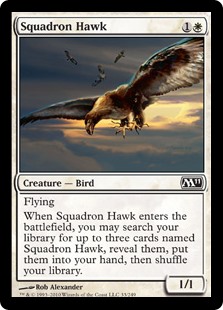 Cawblade had taught me that against other Jace decks you always wanted to be the first player with Jace in play and you resolved him at any opening. This was so important that, for a time, you'd board in Jace Beleren on the draw to protect against losing that fight. (That plan didn't work long-term, for the record.) Once you resolved Jace, you Brainstormed. You had to be very much in control of the game to start fatesealing and actually win the game. Even when you were behind it was better to dig for answers than Unsummon. The logic was that drawing extra cards is very good and even if your opponent answers Jace they are down a card. If you had a fetchland it was just drawing three cards.
Cawblade had taught me that against other Jace decks you always wanted to be the first player with Jace in play and you resolved him at any opening. This was so important that, for a time, you'd board in Jace Beleren on the draw to protect against losing that fight. (That plan didn't work long-term, for the record.) Once you resolved Jace, you Brainstormed. You had to be very much in control of the game to start fatesealing and actually win the game. Even when you were behind it was better to dig for answers than Unsummon. The logic was that drawing extra cards is very good and even if your opponent answers Jace they are down a card. If you had a fetchland it was just drawing three cards.
So that's what I did in these tests—I played Jace when the coast was clear and I brainstormed. Once I was safely ahead I went for the win with his +2.
The Qualitatives: What Was It Like?
No beating around the bush here—Jace is still a fantastically powerful card. Even when you didn't have a fetchland to reset your top cards, you still dug two cards deeper each turn. When you really had to, you could interrupt your card advantage and bounce their last threat. His utility and power was incredible.
I didn't find the -1 ability to be particularly useful except in a few cases against Infect, and once against Jund when they were Spread out of enough black to recast Kalitas. As I mentioned above, I mostly just zeroed Jace and pulled ahead on cards, only using the +2 when I had already won the game. Brainstorming once was good, but doing it every turn made it hard to lose. Even when I punted quite badly. On more than one occasion. In the same game. I don't play Jeskai.
On Durability
One of the most pervasive arguments in favor of Jace's unbanning is that he's a four-mana card that, if you Brainstorm, dies to Lightning Bolt. While this is true, it has some problems. The first is that this was true of his time in Standard and it didn't stop him then. I remember 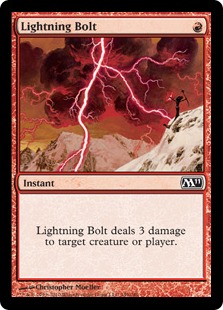 Bolt decks existing back then and Cawblade was still the best deck and you still always Brainstormed because it was just better. The other thing to consider is that Bolt just isn't Bolt anymore. When Splinter Twin was legal, Bolt was omnipresent and this argument held quite a bit of weight. Now though? Our current Tier 1 only has one Bolt deck, Burn, with Jund and Grixis in Tier 2. Bolt just isn't ubiquitous enough that Jace's weakness is a factor.
Bolt decks existing back then and Cawblade was still the best deck and you still always Brainstormed because it was just better. The other thing to consider is that Bolt just isn't Bolt anymore. When Splinter Twin was legal, Bolt was omnipresent and this argument held quite a bit of weight. Now though? Our current Tier 1 only has one Bolt deck, Burn, with Jund and Grixis in Tier 2. Bolt just isn't ubiquitous enough that Jace's weakness is a factor.
Weirdly, attacking Jace to remove him wasn't much of a factor. My Eldrazi opponent worked on the question for some time and concluded that attacking me was better most of the time. The issue is that creature power is higher than it used to be and it was rare he was attacked for exactly three. He was almost always hit for four or more, even when my opponent knew I couldn't stop their attack. As a result, Jace was not only drawing me cards but gaining me significant chunks of life when he did. Sometimes it was necessary, but given my late game power it was imperative that I died as quickly as possible. If I didn't die soon after Jace hit the field, even if Jace was removed, testing showed that I was highly favored to win. Therefore it was to their benefit to kill me rather than him. This was not a universal thing, particularly in the Jund matchup, but overall the creature decks didn't like attacking Jace.
Jace vs. Nahiri
A lot was initially made of Nahiri, the Harbinger when she was printed. The ability to search up and drop Emrakul, the Aeons Torn is definitely powerful, but that hype didn't translate into a long-term boost. Jeskai was briefly threatening to be a Tier 1 deck but had slid very far down the standings by the time my testing started. It's still lower Tier 2. So, how does Jace compare?
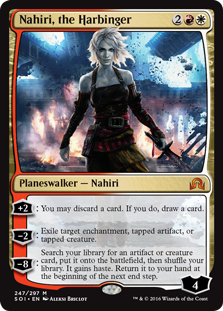 Let's get this out of the way: when Nahiri kills the opponent she does so much, much faster than Jace ever could. It only takes three unmolested turns to swing with Emrakul, while Jace takes six to ultimate. If it's faster kills you want, Nahiri wins handily. Furthermore, the utility of her -2 was great. Exiling creatures was almost always relevant, and was especially powerful against Kolaghan's Command. It was right far more often to use it compared to Jace's Unsummon. It was also nice to have maindeck enchantment removal. It was very important twice against Ad Naus and once against Affinity's Aether Grid.
Let's get this out of the way: when Nahiri kills the opponent she does so much, much faster than Jace ever could. It only takes three unmolested turns to swing with Emrakul, while Jace takes six to ultimate. If it's faster kills you want, Nahiri wins handily. Furthermore, the utility of her -2 was great. Exiling creatures was almost always relevant, and was especially powerful against Kolaghan's Command. It was right far more often to use it compared to Jace's Unsummon. It was also nice to have maindeck enchantment removal. It was very important twice against Ad Naus and once against Affinity's Aether Grid.
Another not insignificant factor was that she starts with more loyalty, making her far more durable. Every time my opponent wanted to attack her, they had to use more creatures than against Jace. This was less relevant than you might think, but it is a point in her favor.
The thing is, after playing extensively with both, I would always play JtMS over Nahiri given the choice. His relevant abilities were all stronger than Nahiri's and he was a far more reliable win condition. Why? Look back up at the test decklists. The only one not playing Grafdigger's Cage, which you may remember prevents Nahiri from summoning Emrakul, was Ad Naus. I was testing during a period when Dredge was the boogeyman and everyone was packing the Cage (although it was later replaced by Ravenous Trap). The problem is that Nahiri's ultimate doesn't actually win you the game—it summons something else that wins the game. If Nahiri can't summon something, she cannot win you the game.
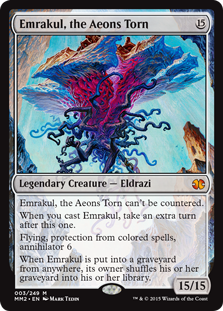 In fact, Emrakul was the weak link in the Nahiri deck. She is a dead card anywhere but in the library, and drawing my kill condition instead of a real card cost me several games. This is assuming that an Emrakul attack actually kills the opponent. There were several times where sacrificing six permanents and taking 15 damage was not an outright death sentence and I lost. The most memorable were against Ad Naus where suspended Lotus Blooms allowed a post Emrakul combo. It just isn't a guaranteed kill.
In fact, Emrakul was the weak link in the Nahiri deck. She is a dead card anywhere but in the library, and drawing my kill condition instead of a real card cost me several games. This is assuming that an Emrakul attack actually kills the opponent. There were several times where sacrificing six permanents and taking 15 damage was not an outright death sentence and I lost. The most memorable were against Ad Naus where suspended Lotus Blooms allowed a post Emrakul combo. It just isn't a guaranteed kill.
Even if you discount the unguaranteed kill, Nahiri is just less powerful. I don't care how good your draws are, rummaging (discard then draw) will never be as powerful as Brainstorm. My opponents were far more scared of me drawing three than they were of Nahiri drawing one if I discarded first. In fact, they were less scared of Nahiri overall than they were Jace. One said that he felt that Nahiri could be powered through and ignored more easily than JtMS. He put me up several cards where Nahiri was only ever one.
People won't concede to an upticking Nahiri but they will to a Brainstorming JtMS. I'd argue than all the non-Unsummon abilities on Jace are win conditions, as both the +2 and 0 will effectively win the game on their own. Unanswered they will put you so far ahead that there is no hope for your opponent. The kill there is entirely self-contained and not at risk of delay because of a one-mana artifact.
The Results Will Surprise You
To summarize the subjective results, Jace, the Mind Sculptor has more powerful abilities and wins the game more reliably than Nahiri, but is less versatile and slower. I would pick the higher power rather than versatility, but that isn't the full story. Join me next week for all of the numbers. They aren't what I was expecting.




“Jace-Guy” Control
Teasing your audience with that cliffhanger – what a naughty author! Can’t wait for part 2!
Boo cliffhangers! 🙂
Good setup article tho.